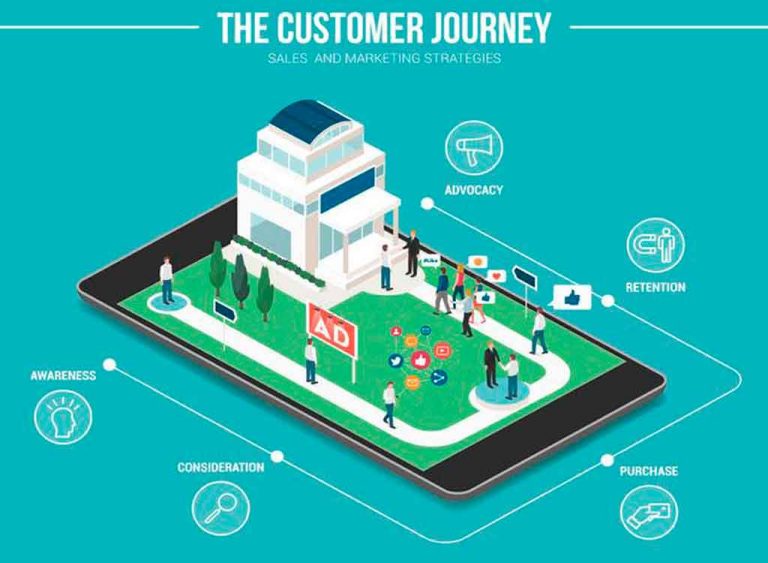Every company aims to create wealth by offering services and products that create value for its customers. When we refer to "value" not all customers of a company have the same idea of the value they obtain.
Value is something emotional and difficult to measure that the customer experiences when interacting with the company. Companies face an important challenge when analyzing the behavior of their customers, as well as when analyzing the emotions the customer experiences when interacting with the company, such as
- How to analyze the customer experience?
- How can we improve this experience?
- What does the client expect or wish to obtain?
- What are the customer's expectations?
The Customer Journey es is a moving image of the different interactions a customer has with the company, from the moment he sets a goal to the time he manages to reach it. This tool allows us, among other uses, to analyze different patterns of behavior of a customer in a situation, which would alert us to the need to make a series of personalized actions on the services offered as a company, so that these are adjusted to the needs and expectations of customers.
But it is important that before we start designing the Customer Journey we get to know our customers, and ask ourselves the following questions:
- Who is my client and what does he do?
The relationship between a company and its customers has a similar taxonomy to human relationships. In order to maintain and strengthen the relationship, it is beneficial to deepen the knowledge of the clients, as if it were a relationship of friendship.
- What actions do you take to achieve your goals?
Every company has to know which processes interact most with customers and understand how customers use them. These processes can be improved through indirect feedback from the customers' own actions.
- How do you evaluate your experiences? How do you feel?
It is remarkable to know how the customer feels after facing any kind of communication with the company, since a satisfied user, both when creating a link with the company and when breaking that link, will be able to trigger positive recommendations in his environment.
The task of knowing our customers is not trivial and requires collaborative work between the different units of our company: Marketing, Business, Financial, Commercial, IT and Sales, among others. Since each of these areas knows a small portion of the customer, this knowledge must be put in common in order to achieve a 360-degree view of the customer and thus have a global image of how he relates to us.
Once we know our customer, it is important to establish the route, that is to say we must ask ourselves what we want to achieve with our Customer Journey.
As with any Big Data project, it is necessary to identify the objective of our analysis. In this case, we cannot be guided by the ambition of trying to know all the interactions that the clients make with the company, or all the information that we have of those clients since we will be faced with a huge amount of information that will not allow us to make the appropriate analyses. Therefore, it is essential to define the process we want to analyze with our Customer Journey and the different stages of it.
Specifically within the Insurance Sector, there are multiple processes that could be analyzed from a Customer Journey perspective, such as
- Recruitment process
Knowing the path followed by users when contracting new products provides us with enough information for a later analysis (and re-design if necessary) of the services offered. It is just as important to know if the customer has finally contracted the product as it is to know their degree of satisfaction, because a good customer experience opens the door to future customers thanks to their recommendation.
- Complaint management process
Knowing the stages that a customer follows when making a complaint, as well as their degree of satisfaction with the service offered by the company managing the process is undoubtedly interesting in order to detect, among others, possible patterns of customer loss.
When faced with an incident, we can find processes that have been dealt with through a single communication between the client and the company, up to complaints that, after numerous communications between the client and the company and through different channels, have ended up giving rise to an unsatisfied client who decides to break all ties with the company.
If we reflect on both cases, it is just as important to know the process that the client carries out to carry out a contract or complaint, as it is to know their degree of satisfaction, which shows the importance of the emotions of the clients in any relationship they have with our company.
We can conclude by summarizing the importance of knowing the customers, as well as defining the different roadmaps that can be made when relating to the company in order to analyze their behavior and as a company to have a proactive attitude by redefining the processes and services offered to meet the needs of the current market, which is marked by the customers.












